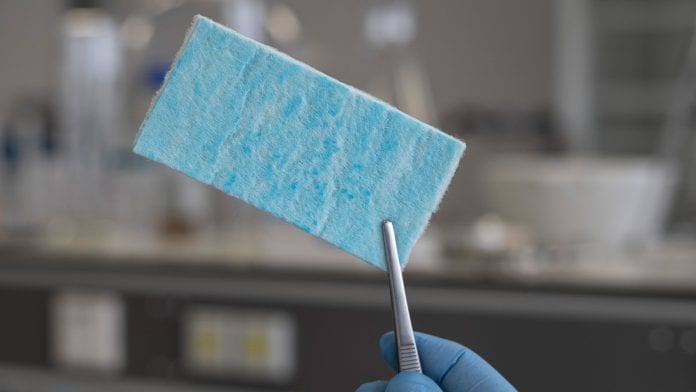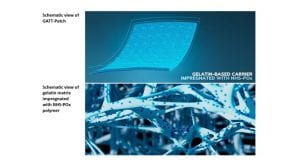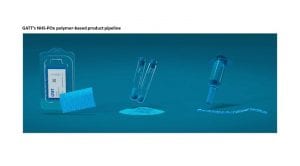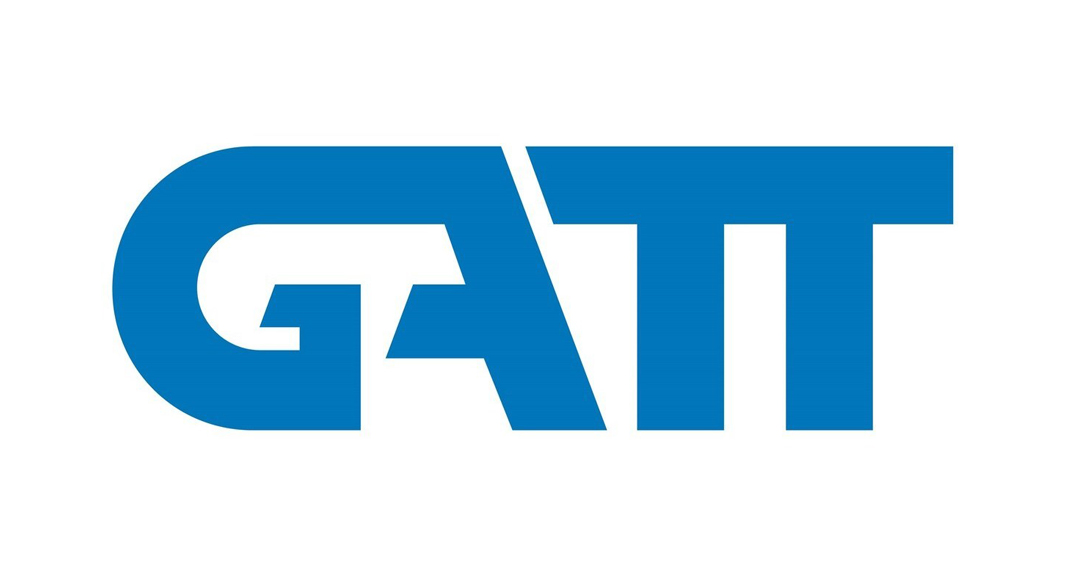
GATT Technologies has developed a game-changing solution targeted to set the new standard in managing bleeding and organ leakage.
Managing surgical bleeding and preventing organ leakage are critical challenges in operating rooms. Analysis of approximately 1.6 million surgeries, including cardiac, vascular, solid organ, and spinal surgeries, has found that the rate of bleeding-related complications is about 30%, with blood transfusions occurring in more than 20% of all patients. When a bleeding occurs, time to haemostasis and the reliability of haemostasis are of the essence, since excessive blood loss and rebleeding after surgery may result in additional complications. Moreover, sealing of transected or damaged tissue is necessary to reduce the risk of organ fluid or air leakage. Haemostasis and sealing complications are associated with blood transfusions, increased hospitalisations, infection, impaired wound healing, and even mortality.
Traditional methods to manage bleeding during surgery include application of pressure, electrocautery and suturing, and the use of staplers. In case these fail, the use of haemostats and sealants assists surgeons with achieving optimal results. However, existing haemostatic solutions have several limitations: they have limited adhesion to the tissue; require a long pressure time to haemostasis (pressure of up to six minutes is needed, costing surgeons valuable time in the operating room); need preparation time or are hard to handle during surgery; and are often expensive. Organ sealing presents an even larger unmet need: for many types of organ leakage, such as leakage of bile from the liver, pancreatic fluid from the pancreas, urine from the kidney, or air from the lung, current solutions only work either partially or not at all.
Introducing GATT Technology’s game-changing polymer-based platform
Recognising this substantial unmet medical need, GATT Technologies was founded by Johan Bender in 2011. Based on years of extensive research and development, GATT developed an innovative, game-changing, polymer-based platform that addresses the challenges of existing solutions, setting the new standard in managing surgical bleeding and preventing organ leakage.
Leveraging its patented synthetic technology, which is more active than any solution on the market, GATT is able to produce haemostatic sealant solutions which are faster and more adhesive than the current standard of care, and which are able to be used in a large variety of surgical applications. The technology is free of human components (other solutions often use fibrin) and is biodegradable: after application on the organ, the product will be excreted via the urinary tract within four to six weeks.
GATT’s technology platform brings several benefits which have the potential to shape the future of surgery: GATT’s solutions are faster than current products, have stronger adhesion, are more flexible in their use, and are also more cost-effective.
The GATT product portfolio
GATT’s lead product is GATT-Patch, consisting of a gelatine-based carrier, 3D impregnated with an activated polymer which enables its strong haemostatic and sealing capabilities. GATT-Patch is targeted for open as well as laparoscopic and robotic use, to manage bleeding and organ leakage on a large variety of surgical procedures. The patch brings several unique features compared to existing products on the market: it is fast – haemostasis occurs within 20 to 30 seconds after application (compared to several minutes, as is the case with the current standard of care); its adhesion is robust – due to its highly active components it adheres much better to tissue than existing products; it can be used on both sides, allowing the use of multiple layers in extreme cases; by tufting or rolling up parts of the patch, it can be introduced into a deeper cavity, enabling even more types of situations that can be addressed; and because of its lack of human components it can be produced more efficiently than current products, delivering a lower cost of goods than the current standard of care.
GATT-Patch has recently entered the clinical phase; and is being evaluated in a first-in-human trial since the end of April 2021. The initial regulatory indication for GATT-Patch is on the liver, treating patients who are undergoing liver surgery, but its ultimate targeted use is much broader; GATT has a plan in place towards obtaining approval for use on soft tissue and cardiovascular applications, which will allow a general claim for commercial use as a haemostat, as well as a plan to approve GATT-Patch as a sealant – for example, preventing the release of air from the lungs, or sealing organs during hepato-pancreato-biliary surgery to prevent bile or pancreatic fluid leakage.
GATT is also developing GATT-Powder. The powder, for which the formulation is currently fixed and formal preclinical testing is starting, will work similar to GATT-Patch; but will target indications that are not able to be addressed with a patch, such as endoscopic use, large surface area bleedings where a patch is too small, oozing bleedings on areas impractical for a patch to be placed. Moreover, several surgical procedures require a combination of haemostatic and sealant capabilities on a large surface, for which GATT-Powder would be an ideal option – for example, breast surgery or abdominoplasty where seroma formation is associated with longer wound healing and the need for additional surgical procedures.
Next to GATT-Patch and GATT-Powder, GATT’s research and development pipeline includes the creation of a liquid form: GATT-Gel. GATT-Gel is being developed for high precision application where strong adhesion and sealing is required, specifically for high-pressure vessel sealing during vascular reconstructions.
Beyond the solutions already in the pipeline, GATT is considering additional formulations for specific applications, such as orthopaedic or traumatic use to address bone bleeding and bone regeneration, as well as dental use. Additionally, the company believes that there is extensive potential for this technology to be used in trauma situations, for example in emergency response or military use.
The potential
GATT’s solutions have been tested by a large variety of surgeons with many specialisations, and their enthusiasm confirms the potential for GATT to set the next standard in this space. One strong example is its potential use to enable sutureless robotic surgery – with more and more procedures being performed in a minimally invasive manner, having solutions that enable this can further accelerate this trend. In collaboration with an external test centre, GATT-Patch was tested and proved successful in facilitating the performance of a robotic sutureless partial nephrectomy. Mimicking the removal of a tumour on the kidney robotically, GATT-Patch was applied and was able to control the bleeding within 30 seconds without any use of sutures. The expert surgeons who performed the surgery confirmed that this is ‘currently not possible with existing products, and that this has the potential to be a game changer in the industry’. Similarly, testing models have shown that GATT-Patch’s ability to withstand the aggressive nature of pancreatic fluid is superior to existing products, also confirming the potential to address an additional fully unmet need there.
“We are convinced of the game changing potential of our technology, and almost every day we now get new evidence confirming that this is truly the case,” says Geert van Gansewinkel, CEO of GATT Technologies. “We are looking forward to taking the steps we are planning with this platform to become the next standard in managing bleeding and organ leakage.”

The plan ahead
GATT has recently started its first clinical trial for its lead product, GATT-Patch. The trial, which officially started on April 21, is being conducted by three leading academic medical centres in the Netherlands: Radboudumc (Nijmegen); the University Medical Centre Groningen; and Erasmus University Medical Centre in Rotterdam. The start of its first clinical trial marks an important milestone for the company. “Based on our patented synthetic polymer technology, we are convinced of the opportunities of our platform,” says Johan Bender, founder and CTO of GATT. “All preclinical work performed in the past years has confirmed safety and superior performance of GATT-Patch. It is very exciting to now see our lead product used on patients, which will give us vital data regarding the safety and performance of GATT-Patch in a clinical setting.”
Dr Stuart Head, Chief Medical Officer of GATT, comments: “The principal investigators, Professor Dr Hans de Wilt (Radboudumc), Professor Dr Robert Porte (University Medical Center Groningen), and Professor Dr Kees Verhoef (Erasmus University Medical Centre) are all well renowned experts. Their expertise in the field has already proven very valuable during the preparation for this trial, and we feel confident that further execution of the trial is in good hands. We hope we can continue to leverage their feedback as we continue to build out our platform.”

“This product fills an important clinical need,” adds principal investigator Professor Dr de Wilt. “Having fast and effective solutions to manage complex bleeding is crucial to prevent complications for patients during or after surgery. Haemostats and sealants are used when other methods to contain the bleeding are ineffective or insufficient. Current products on the market have limitations in their ease of use, may not always be able to stop the bleeding, and are also costly. This product aims to address all these limitations. Radboudumc is committed to pioneering new innovations that substantially increase standard of care and change the way complex surgeries are performed.”
The objective of the initial trial is to obtain a CE mark by mid-2022, allowing the first commercial use of the product in Europe. In parallel, regulatory approval from the US Food and Drug Administration (FDA) is being prepared, which will provide access to the US market. The organisation is planning to start its pivotal FDA study immediately following the clinical trial, with targeted regulatory approval for the US market set for end of 2023. The current clinical indication scope of the trials is the liver, but there is a plan in place to expand the targeted approved use towards a general claim for haemostasis, as well as sealing claims. This plan includes global rollout, obtaining clinical approval region by region.
A similar path will be followed for GATT’s additional pipeline products. Powder is the next product in the pipeline that will enter preclinical testing, followed by clinical testing. Gel testing will follow. Ultimately, GATT’s vision is to have a solution for all surgical bleeding and organ leakage challenges, including liver, spleen, kidney, and pancreatic resections, as well as cardiovascular, lung, orthopaedic, and neurosurgery via the products that are already in the development pipeline. GATT is also looking at other applications such as the potential for use in bone bleeding, dental bleeding and combat trauma. With next-generation technology and innovative solutions, the company is indeed setting the standard in managing bleeding and organ leakage, and is driving a future of better surgical care.









